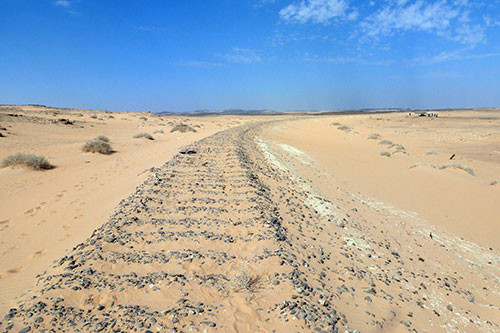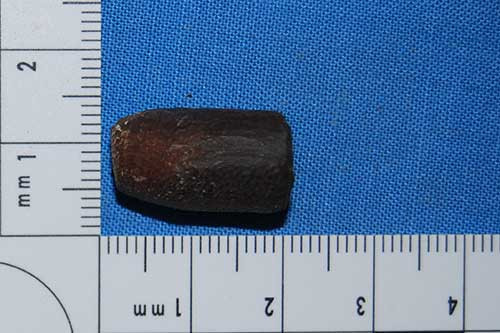Bullet fired by Lawrence of Arabia during famous train ambush discovered in Arabian Desert

A bullet fired by Lawrence of Arabia during the famous Halat Ammar train ambush has been discovered in the Arabian Desert, a century after the battle took place. Archaeologists from the University of Bristol say the find helps confirm the accuracy of T E Lawrence's accounts of his battles, which were thought by some historians to have been embellished.
The 1917 Hallat Ammar train ambush was one of Lawrence's best known acts of guerrilla warfare during the Arab Revolt. Before the war, Lawrence was an archaeologist who had worked across the Middle East, including Jordan, Iraq and Syria. His knowledge of the landscape led him to be employed by the British Army to undertake a military survey of the Negev Desert.
He worked with the Arab tribes against the Ottoman Turks and his exploits were eventually popularised in the 1962 film Lawrence of Arabia, based on Lawrence's autobiographical account of the time, Seven Pillars of Wisdom. A key method of attack became targeting trains – in a bid to divert attention from the front lines.

In one such attack, at Halat Ammar, Lawrence claimed to have played a key role. In Seven Pillars, he gives a first-hand account of the battle and his heavy involvement in it – one of the most famous scenes from the Oscar winning film. How accurate this account was has always been in doubt, with many historians claiming Lawrence exaggerated his role.
However, the discovery of a bullet from a Colt automatic pistol has now helped give support to Lawrence's account. Archaeologists working on the Great Arab Revolt Project (GARP), led by researchers at the University of Bristol, came across a used bullet at the site of the train ambush and found it was from a weapon only Lawrence would have had access to.

Archaeologist Nicholas Saunders said: "The bullet we found came from a Colt automatic pistol, the type of gun known to be carried by Lawrence and almost certainly not used by any of the ambush's other participants.
"It is extraordinary that after 100 years new discoveries like this are still being made, casting new light on a guerrilla war which helped reshape the Middle East after 1918 – the consequences of which we are still living with today."
Neil Faulkner, who also led the dig, added: "Lawrence has something of a reputation as a teller of tall tales, but this bullet – and the other archaeological evidence we unearthed during 10 years of fieldwork – indicates how reliable his account of the Arab Revolt in Seven Pillars of Wisdom is."
© Copyright IBTimes 2025. All rights reserved.






















